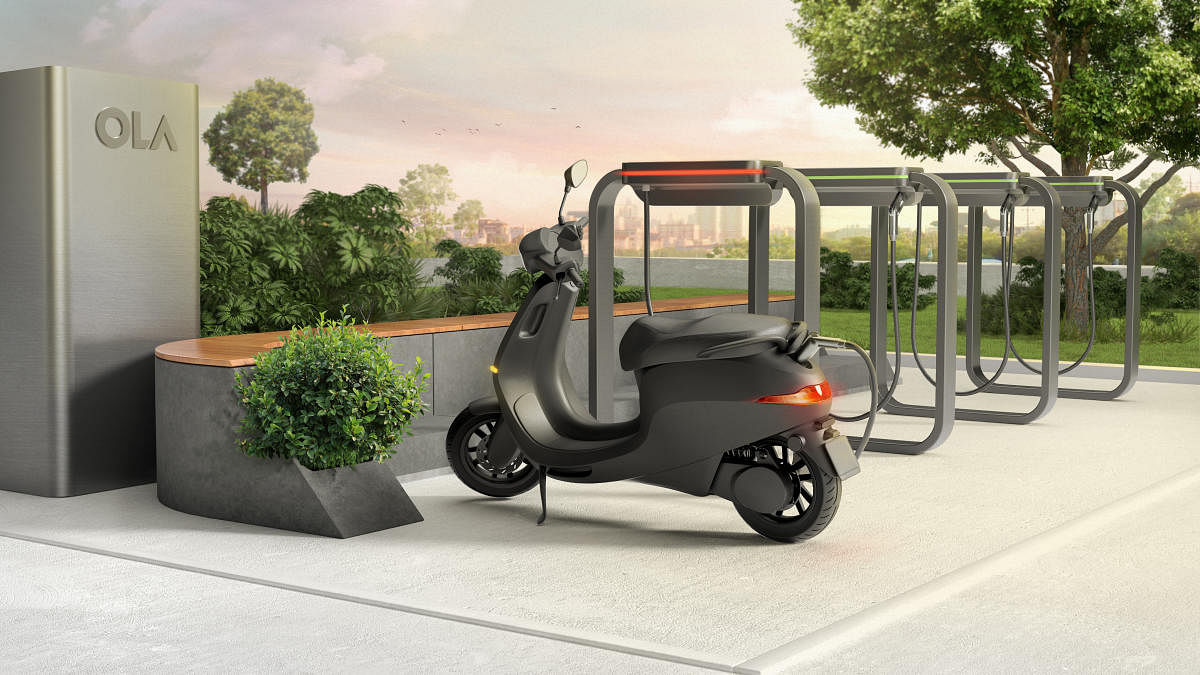
The dramatic rise in Electric Vehicles (EV) was bound to trigger a surge in demand for charging stations. The e-vaahana campaign has now given it a big push, with the Bangalore Electricity Supply Company (Bescom) set to install 300 more stations across Bengaluru. Is this a game-changer in e-mobility adoption?
The buzz around EVs is real. Ola Electric, fresh after setting up a massive Futurefactory, kicked off delivery of its Ola S1 scooters on Wednesday. Billed as the world’s largest scooter manufacturing setup, the Futurefactory is proposed to roll out one crore e-scooters every year at full capacity.
Revving up the competition, Bengaluru-based Ather Energy, Hero Electric and other e-mobility players are in hyperboost mode, increasing their production numbers. To expand the charging ecosystem, Ather also offers its propreitory charging connector to other makers. The big objective: To build an interoperable two-wheeler fast charging platform.
Range anxiety
A robust, high-density, well-spread out grid of fast, reliable charging stations has always been critical to address that big concern of EV users: Range anxiety. Well aware of this, the EV makers have indeed set up their own charging grids. But the e-vaahana concept goes beyond.
Representing 1,050 apartment complexes with over 2.5 lakh households, the Bangalore Apartments Federation (BAF) had identified the pain points and challenges months before it launched the e-vaahana campaign in partnership with Bescom and other stakeholders.
Recalls Vishnu Gattupalli, who coordinates the campaign from BAF: “It was not just about installing the charging stations. We brought in a knowledge partner, the World Resources Institute (WRI) and empanelled 10 vendors, held sessions with them on the government policies and knowledge perspectives.”
Station roll-out
Keen to expand their base, many vendors have offered to set up the stations free of cost. “Fifty apartment complexes, with many existing and potential EV owners signed up. Within a month, the chosen vendors will approach these complexes and begin the installation process. We expect at least 30-40 complexes to be equipped with these stations soon,” informs Vishnu.
Studies have confirmed that about 70% of the EV charging happens at home, overnight. Acknowledging this, the e-vaahana campaign has proposed to scale up the number of stations based on demand. “When these stations come up in big numbers in such close proximity to their homes, more people will find it convenient to switch to EVs.”
The adoption is bound to pick up pace since the government has proposed to amend building bye-laws to make EV charging points mandatory in apartment complexes and shopping malls.
OEMs in competition
In competitive mode, most Original Equipment Manufacturers (OEM) have unveiled plans to spread out and strengthen their existing charging networks. It is learnt that Ola Electric too has plans to extend its hyper chargers to residential complexes.
The first of these hyperchargers, customised for fast-charging, has already been installed at Ola’s Koramangala complex. On the company’s agenda are over a lakh charging points spread across 400 cities nationwide.
In the first year, the plan is to set up more than 5,000 charging points across 100 cities in India. Ola Electric had claimed that its e-scooter can be charged 50% in just 18 minutes for a 75 km range.
Hero Electric, which currently leads in electric two-wheeler sales countrywide, has partnered with EV charging solutions startup, Massive Mobility, to set up 10,000 stations. This network could be accessed by all EVs, pushing for more standardisation between OEMs.
Massive Mobility has a unique model, enabling parking and charging point owners to offer charging services to users. It employs a cloud-based solution to smartly integrate the two.
Shared charging
Back to charging stations in residential complexes. Many wonder how that would make a difference when they can charge their EVs from their individual homes. The WRI knowledge base shows that a shared charging facility makes better sense.
Here’s how: Individual owners may route charger connections to their meter, which is a laborious, repetitive process. Compare this with a Residents Welfare Association (RWA) planning for and implementing a shared facility.
Individual apartments typically have a sanctioned load of 5kW or 10kW. “For shared connections – societies typically have headroom for shared charging facilities. They can also employ dynamic load management to optimise the available sanctioned load and apply for additional load where required.”